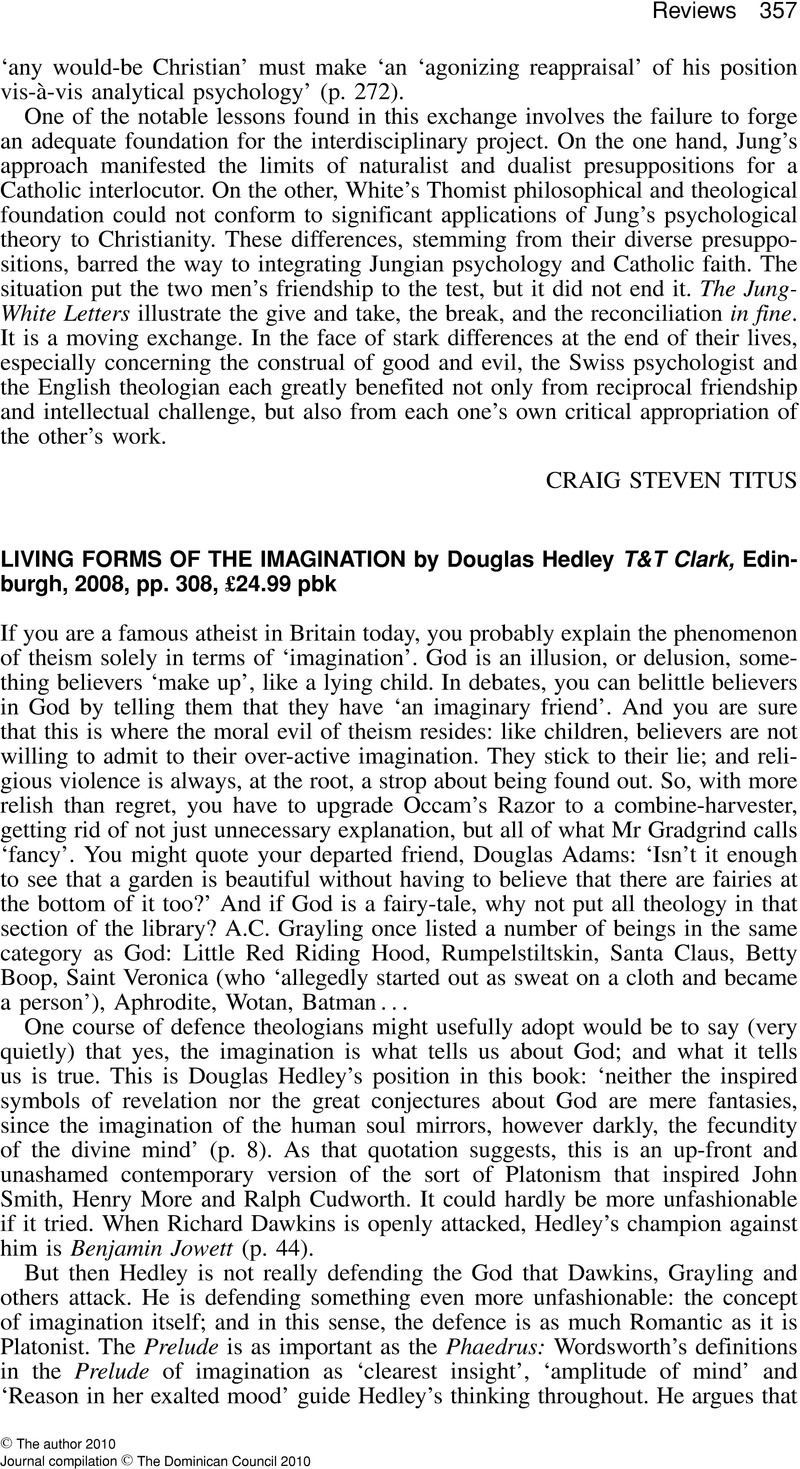No CrossRef data available.
Article contents
Living Forms of the Imagination by Douglas Hedley T&T Clark, Edinburgh, 2008, pp. 308, £24.99 pbk
Review products
Living Forms of the Imagination by Douglas Hedley T&T Clark, Edinburgh, 2008, pp. 308, £24.99 pbk
Published online by Cambridge University Press: 01 January 2024
Abstract
An abstract is not available for this content so a preview has been provided. Please use the Get access link above for information on how to access this content.

- Type
- Reviews
- Information
- Copyright
- Copyright © The author 2010. Journal compilation © The Dominican Council.


